What are solar flares and solar storms and how serious can they be?
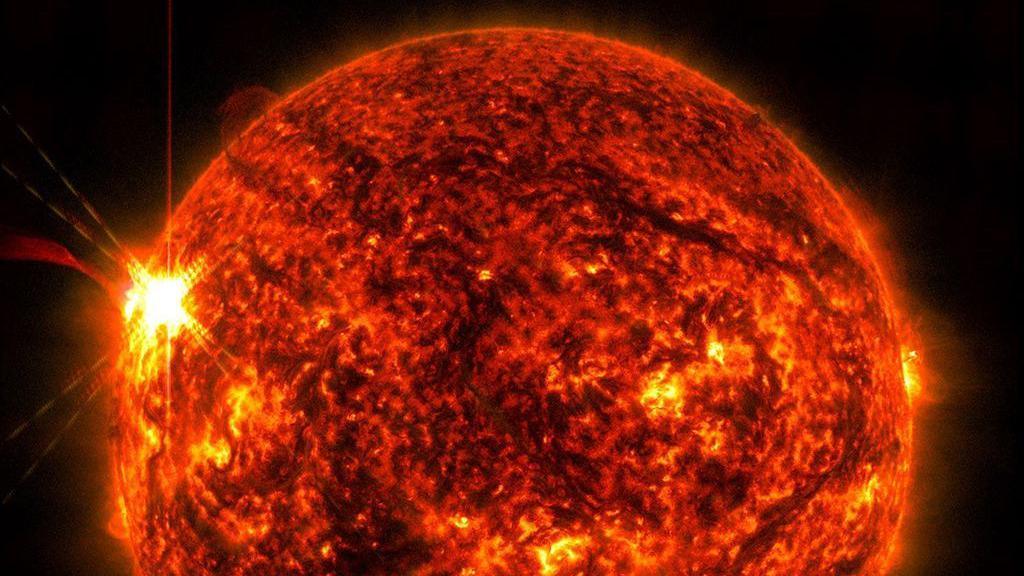
- Published
The Sun is experiencing a surge in activity which has resulted in the largest solar flare seen so this year.
Nasa's Solar Dynamics Observatory, which constantly watches the Sun, captured an image of the event earlier this week.
A period of high activity on the Sun, known as space weather or solar storms, can affect technology on Earth and astronauts in space.
Keep reading to find out more about solar storms and solar flares.
More stories about the Sun
Space agency release most detailed picture of the Sun yet
- Published27 April
The Sun's 'many faces' revealed in new images
- Published22 November 2024
Solar Probe makes history and breaks its own records
- Published9 July 2024
What is space weather?
Watch: The Sun emits strong solar flare in December 2023
Space weather is when a continuous flow of charged particles from the Sun, known as solar wind, constantly hits the Earth.
Space weather is completely normal, but during periods of high solar activity, Earth experiences increased impacts and this is often referred to as a solar storm.
What is a solar storm and a solar flare?
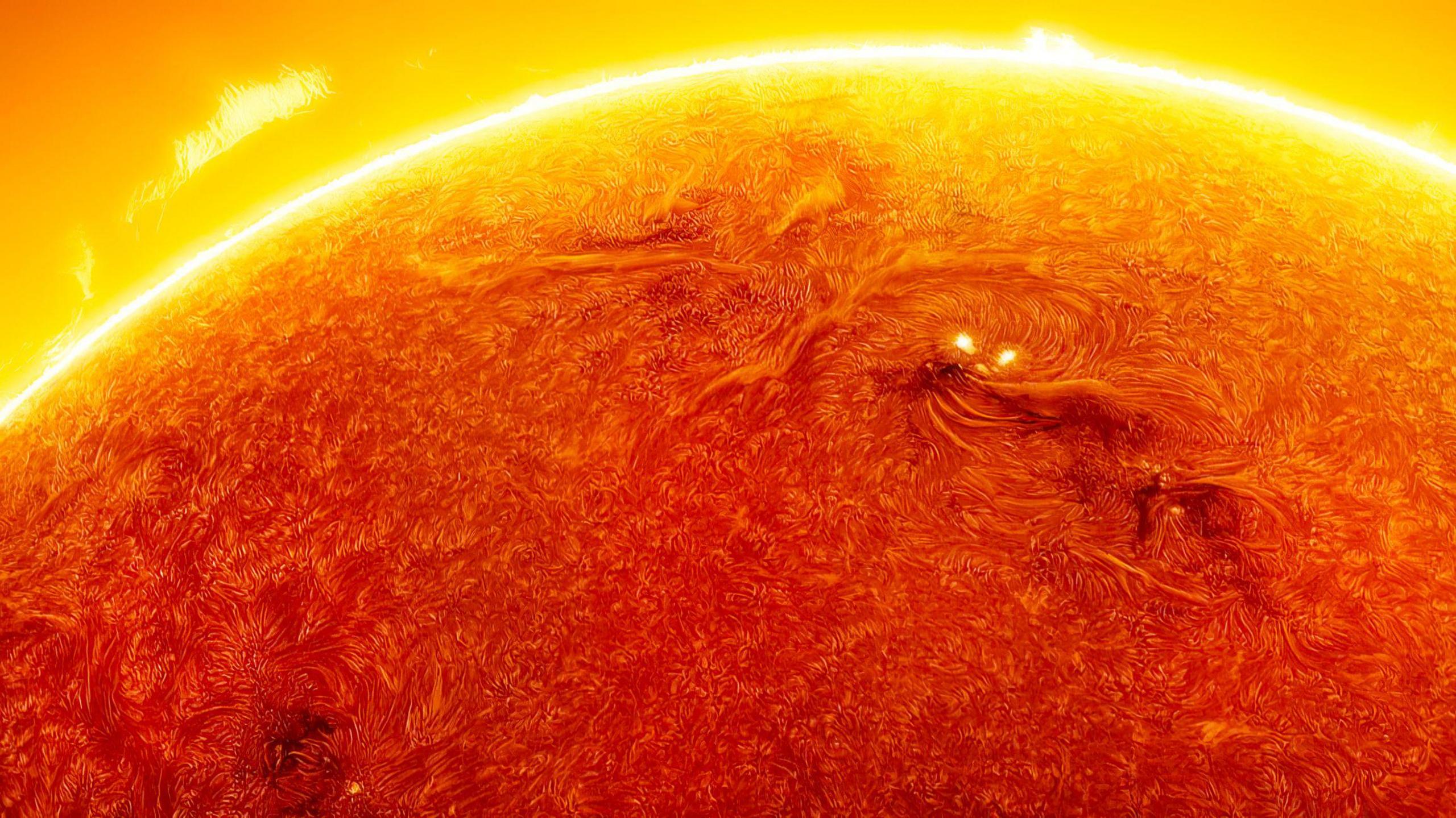
Solar storms are a normal part of our Sun's solar cycle. They happen when the Sun emits huge bursts in the form of solar flares and coronal mass ejections (CMEs) - spewing light, energy and solar material out into space.
Solar flares are electromagnetic radiation that travel from the Sun at the speed of light, reaching Earth in just over eight minutes. They often happen along with coronal mass ejections, which are fast but not as fast.
Exploding out from the Sun, CMEs are huge bursts of charged energy travelling at millions of miles an hour.
Solar storms can reach Earth at different strengths and the energy from the Sun can create bright lights in the sky known as auroras, such as the northern lights.
But just like the weather here on Earth, the stronger the storm the more disruption it can cause.
Solar storms aren't dangerous for humans on the ground, but they can cause disruption to satellites and electronic devices.
What could happen in a solar storm?
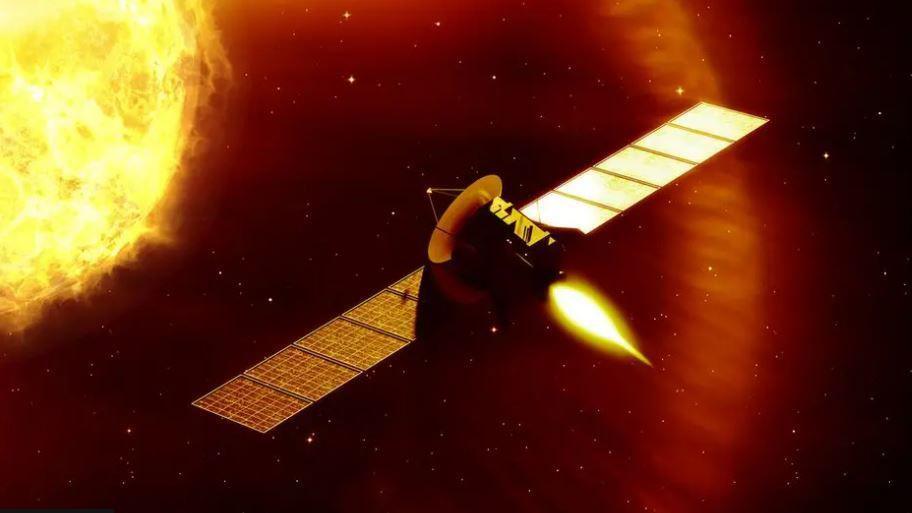
As the Sun becomes more active it can have an impact on technology
On Earth, solar storms can disrupt satellites and also different forms of electronic devices, such as phones.
For example, in 2017 two massive solar flares fired out from the surface of the Sun disrupted devices such as GPS navigation systems on Earth.
And in February 2011 a powerful solar flare interfered with radio communications throughout China.
Further back a solar flare caused a nine-hour blackout for millions of people in the Canadian province of Quebec in 1989.
And the Victorians also struggled with the effect of space weather in 1859 when a huge solar eruption caused a geomagnetic storm that interfered with railway signalling and telegraph lines.
Could solar storms and solar flares disrupt trains and railways?
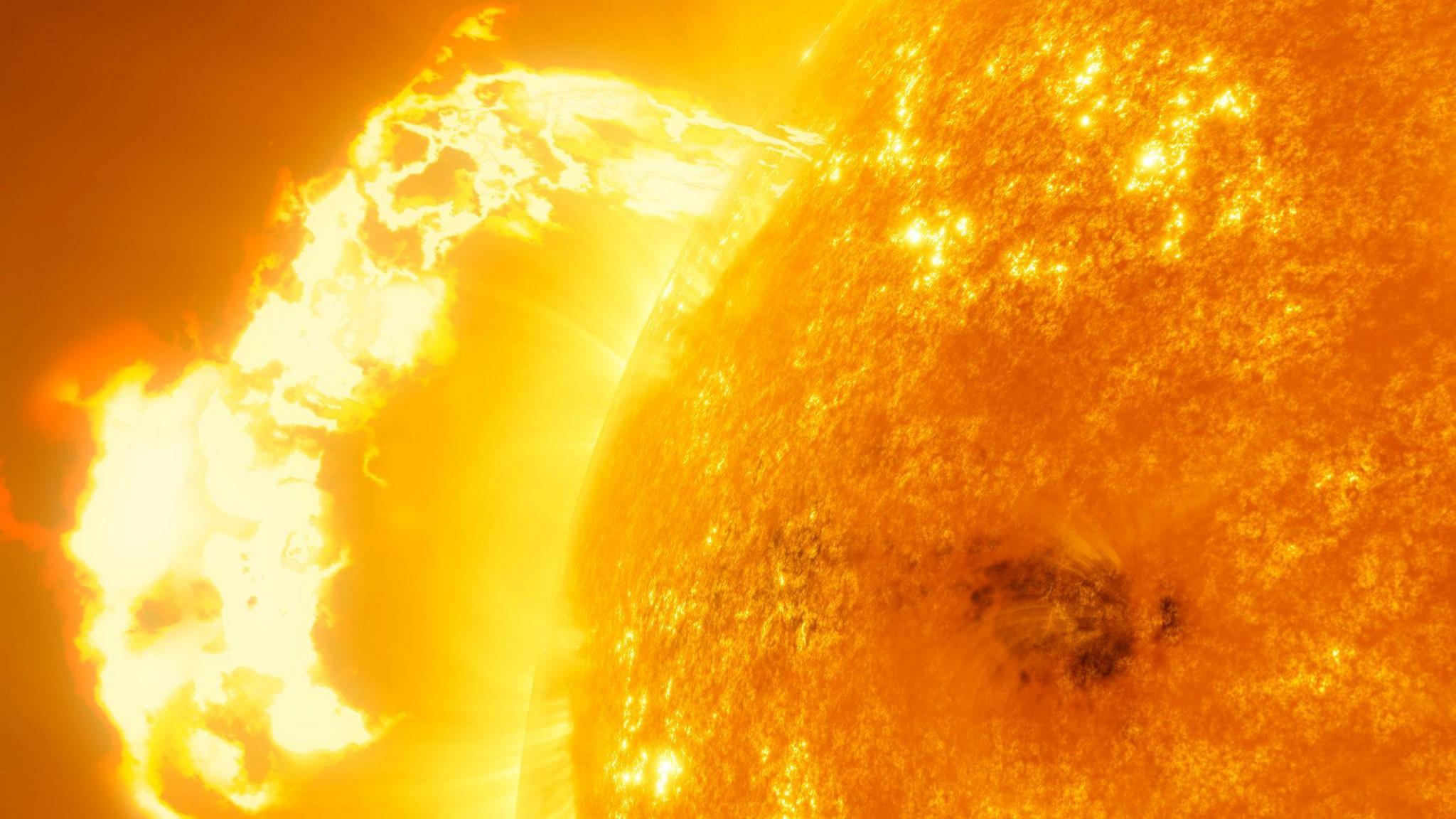
A study at Lancaster University has warned the UK's rail network should be prepared in the event a rare storm disrupts the network in the near future.
Researcher Cameron Patterson said the "relatively rare" storms needed to be "taken seriously" by the rail industry.
Martin Frobisher of Network Rail, which runs most of the country's rail network, said the firm considered the storms to be a "very small risk".
"We need to focus our limited resources on higher priority issues such as climate change," he said.
How often do solar storms happen?
Watch: Nasa filmed the Sun for ten years - check out the video!
The Sun goes through a regular cycle of calm and stormy activity which lasts for around 11 years. In 2020 Nasa announced the beginning of a new cycle of activity for the Sun.
The new solar cycle, called Solar Cycle 25, means it won't be unusual to hear about an increase in the Sun's activity over the next few years.
Do solar storms affect humans?
Watch this enormous solar flare from 2017
Solar flares can't pass through the Earth's atmosphere and are not harmful to humans on the ground.
So, other than the potential disruption to electronic devices, we might not notice much difference on the surface of our planet.
However, the increased activity can disrupt equipment in space and is dangerous for astronauts exposed to higher than normal levels of radiation.
Radiation is energy that moves from one place to another. We are exposed to radiation in our everyday life.
Some sources of radiation include the energy from the Sun here on Earth, or microwaves at home, which are both relatively harmless.
But being exposed to a huge amount radiation in one go can be harmful, so it's important for Nasa to monitor the Sun's behaviour to keep astronauts safe.
Can you have a weather forecast in space?
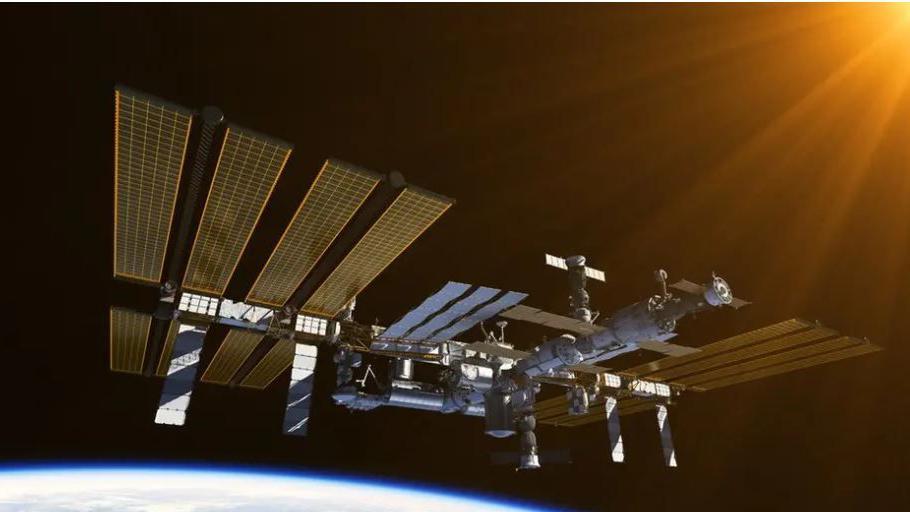
The Sun is a huge ball of electrically-charged hot gas. This charged gas moves, generating a powerful magnetic field.
Every 11 years or so, when the Sun's cycle comes to an end, the magnetic field completely flips.
If you can imagine the sides of a magnet swapping from positive to negative, similarly the magnetic field at the Sun's north and south poles switch places. It takes about another 11 years for the Sun's north and south poles to flip back again.
As the magnetic fields change, so does the amount of activity on the Sun's surface, which means more sunspots start to appear.
What are sunspots?
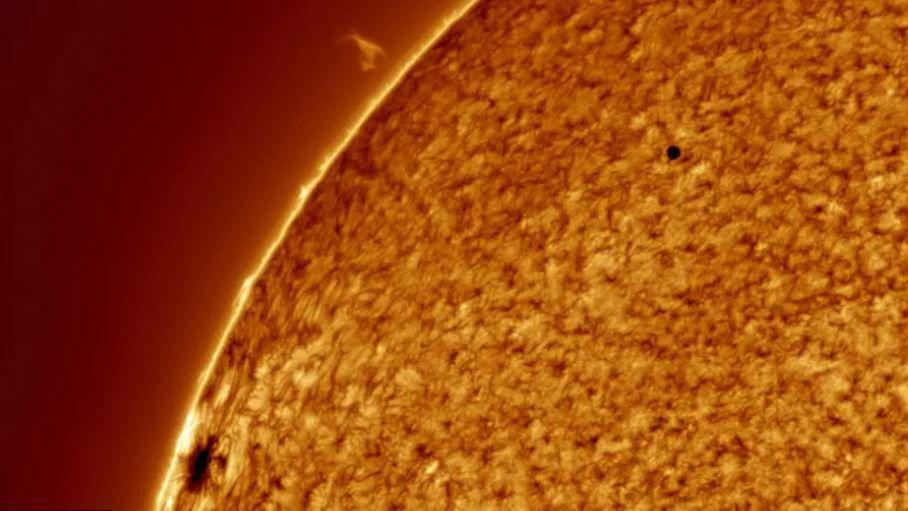
Sunspots which appear as dark patches on the star's surface indicate an increase in activity
Sunspots, are dark spots on the Sun, their numbers help scientists monitor our star's activity.
Sunspots appear darker because they're cooler than their surroundings, they are the areas of the Sun where huge explosions of light and energy take place.
Most sunspots cover an area about the size of the Earth or even bigger!
What is the solar maximum?
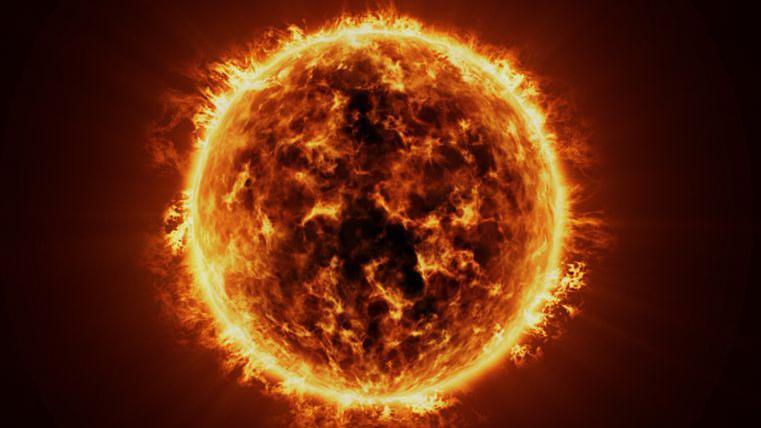
The middle of the solar cycle is the solar maximum, when the Sun has the most sunspots. Solar storms are more likely during the peak of the solar maximum during its 11-year cycle.
The team researching the Sun at Lancaster University says that the next solar maximum is expected about 2025 or 2026, but said the space weather can also occur at other times.
